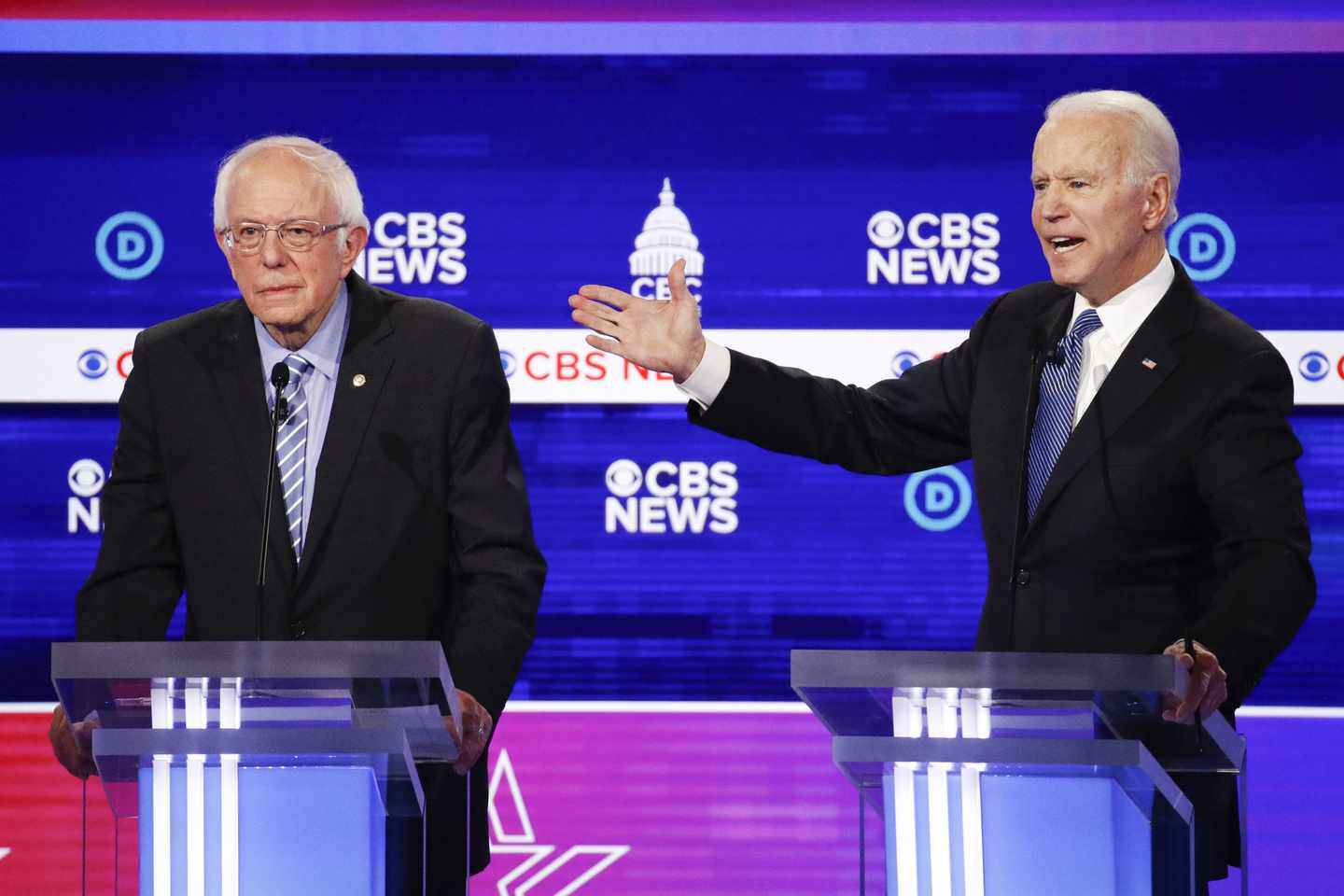Five Big Challenges Facing Democrats in 2020
March 6, 2020#election2020 #DonaldTrump #JoeBiden #BernieSanders #tomsteyer #MikeBloomberg #Democraticpresidentialprimary

Divided Democrats can agree on one thing: The other guy would be a disaster.
“In 30-plus years of politics, I’ve never seen this level of doom. I’ve never had a day with so many people texting, emailing, calling me with so much doom and gloom,” Matt Bennett of the center-left group Third Way told Politico after Bernie Sanders’ big win in Nevada.
Progressives share an equal level of doom and gloom around the prospect of former Vice President Joe Biden winning the nomination.
“Very often, we are told — by people on television and in political media, perhaps by the people in our social circle and our families — that Joe Biden is the only way that Democrats can win in 2020,” laments New York Magazine’s Rebecca Traister. “But when I look at these last decades, I don’t actually see how much we’ve won with a party run by Those Guys. I see how much we’ve lost.”
Biden’s 2020 campaign, fellow New York Magazine contributor Jonathan Chait predicts, “is going to end in a disaster for the whole party.”
Super Tuesday’s super-fast consolidation of the Democratic presidential field has appropriately been framed as a two-man race between Bernie’s progressive revolution and the moderates’ plan to play-it-safe with Uncle Joe. There’s no question that Biden vs. Bernie is another battle in the ongoing “struggles for the soul of the Democratic Party.”
The nasty ideological fight is far from Democrats’ only problem. Here are five big challenges facing Democrats in 2020.
1. Democrats are equally divided along generational lines.
For a half-century, moderates have battled liberals for control of the Democratic Party. That’s not new. This time, that split is also reflected in Democrats’ age. According to an ABC News/Washington Post exit poll, nearly 60% of Democrats between the ages of 18 to 29 years old voted for Sanders on Super Tuesday compared to 17% for Biden. At the other end, voters 65 and older went 48% for Biden and 15% for Sanders.
The age gap creates problems for how Democrats communicate, the style and tenor of campaign messages and what’s considered civil in political discourse. Young progressives, frustrated by the Establishment, relish the chance to match President Trump’s brash style and in-your-face tone. They see moderate Democrats as weak pushovers. Yet, that style is what’s driving independent older voters away from Trump. It won’t be easy for Democrats to reconcile those radically different approaches.
2. Democrats are overestimating the power of anti-Trump sentiments to drive turnout.
Democrats clearly are banking on Trump to be the main driver for their “get out the vote” efforts. That worked to great effect during the 2018 midterms, which showed incredible strength for Democrats in turning out their base. But in the social media age, four years is a long time to sustain the resistance, and there are signs Trump might be losing his power to motivate Democrats to vote.
In contrast, he is generating unprecedented enthusiasm among GOP voters in an uncontested primary. According to Rolling Stone, “In New Hampshire, Trump received 129,696 votes, which is more than double what Obama got in 2012 and George W. Bush in 2004.”
3. Enthusiasm among women is down.
Trump’s 2017 inauguration was answered in an unprecedented way with the Women’s March on Washington. That enthusiasm was channeled into progressive meet-up groups. The #MeToo movement seemed to add more motivation for women to take action and become politically engaged.
What happened to all that energy and enthusiasm among women? Democrats started the race with a promising field of six female candidates: Kamala Harris, Elizabeth Warren, Amy Klobuchar, Kirsten Gillibrand, Tulsi Gabbard, and Marianne Williamson. Now, it’s down to two rich white men who represented mid-Atlantic and New England states, respectively, in the U.S. Senate.
“No matter which person or party wins now, the historical grid at the back of my son and daughter’s Little Presidents board book will be getting yet another white male face,” writes Vogue contributor Michelle Ruiz. “It’s a cruel and frankly outrageous bill of goods that women and girls are sold: to be bombarded by bedazzled ‘Who Run the World?’ T-shirts and ‘Girl Power’ buttons, only to be told by the general electorate over and over again that the best you can hope for is vice president (maybe) or first lady.”
4. Young voters aren’t showing up.
The drop in the youth turnout among Democratic primary voters is a big concern for Bernie’s chances to secure the nomination. “Have we been as successful as I would hope in bringing young people in? The answer is no," Sanders told the press after Super Tuesday’s mixed results.
It should terrify all Democrats in advance of November. In North Carolina, overall turnout was up 17% but youth turnout was down 9%. According to the Washington Post, “Youth turnout compared to 2016 is either flat or down in a majority of states that have voted.”
5. Will the two billionaires take their ball and go home?
Tom Steyer and Michael Bloomberg effectively bankrolled the Democrats’ 2018 midterm campaigns. The latter spent more than $100 million to aid candidates in swing congressional districts. The former kicked in another $123 million to build the “Biggest Political Machine You’ve Never Heard of.”
To put those numbers in perspective, the Democratic Congressional Campaign Committee spent $84 million during the 2018 cycle. Bloomberg and Steyer’s combined spending was nearly three times as much. Both billionaires’ largesse was driven, at least in part, by their 2020 presidential ambitions. Democrats should be concerned that both of them might temper their spending in the lead-up to November.
Source: https://www.realclearpolitics.com/

